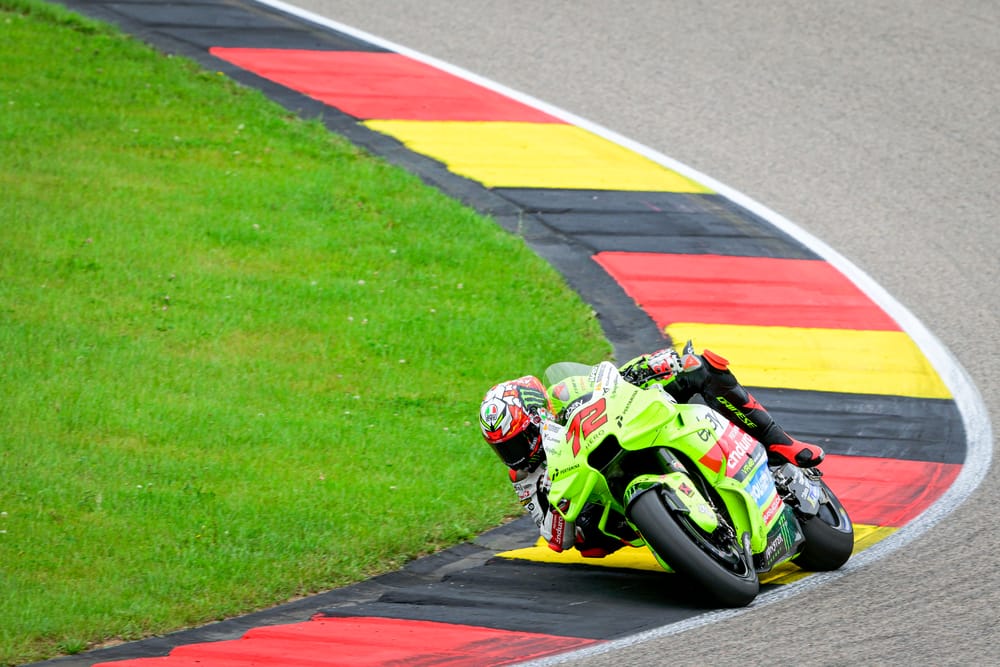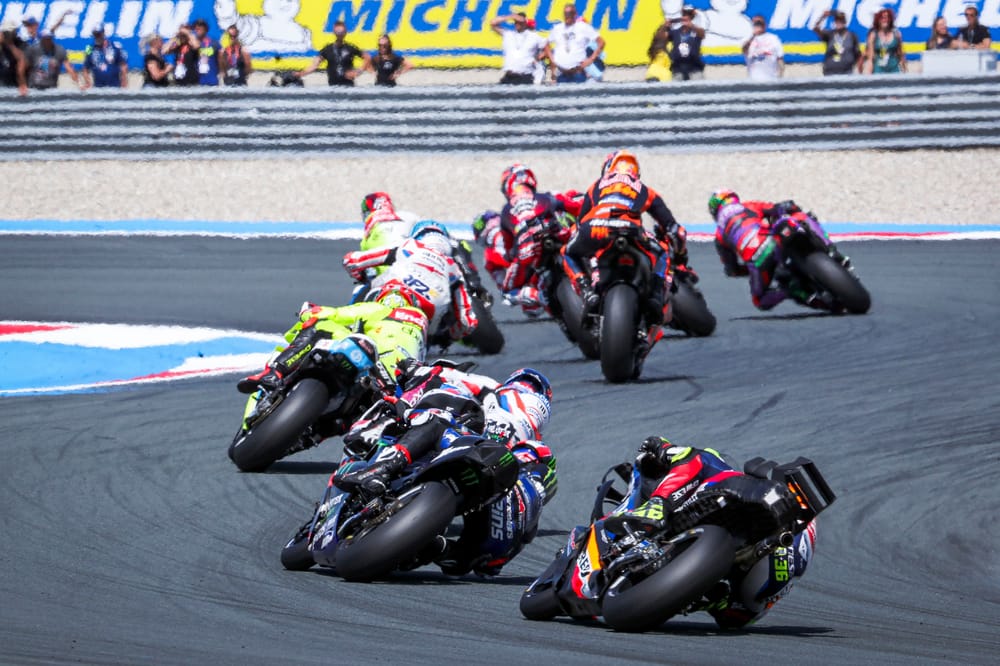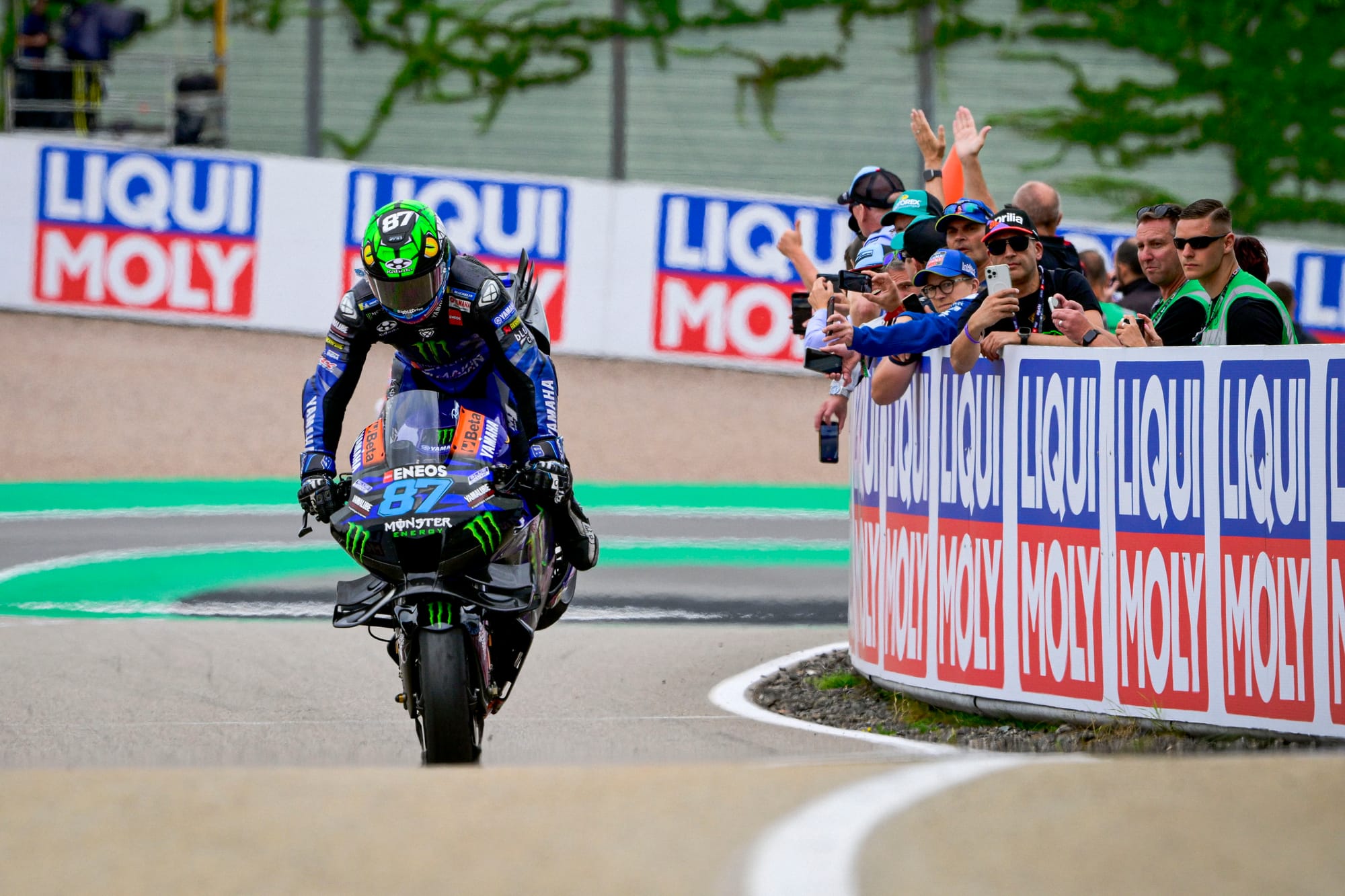There has to be a good deal of mental comfort in Marco Bezzecchi knowing that, even if his pretty miserable third year in MotoGP doesn't meaningfully improve, it hasn't succeeded in kneecapping his aspirations of becoming a factory rider.
But if the Aprilia contract for 2025 and 2026 has provided that relief, it hasn't really come across - not in the results, not in the demeanour. And part of that has to be the implied acceptance that Bezzecchi's travails might not end even when he finally moves on from the Ducati GP23.
At Assen, the round that followed the announcement of Bezzecchi's Aprilia deal, he drew a complete and utter blank, a meek shadow of the rider who looked so potent at the twisty Dutch track in 2021 and 2022. Then, impressively given it had come a week after the misery of Assen, Bezzecchi had what he would describe as "the worst day of the year".
After a fast crash and amid a near total lack of pace, Bezzecchi plopped down into the chair in the media centre with a look that made asking questions feel like twisting the knife.
"The problem is always the same," he said.
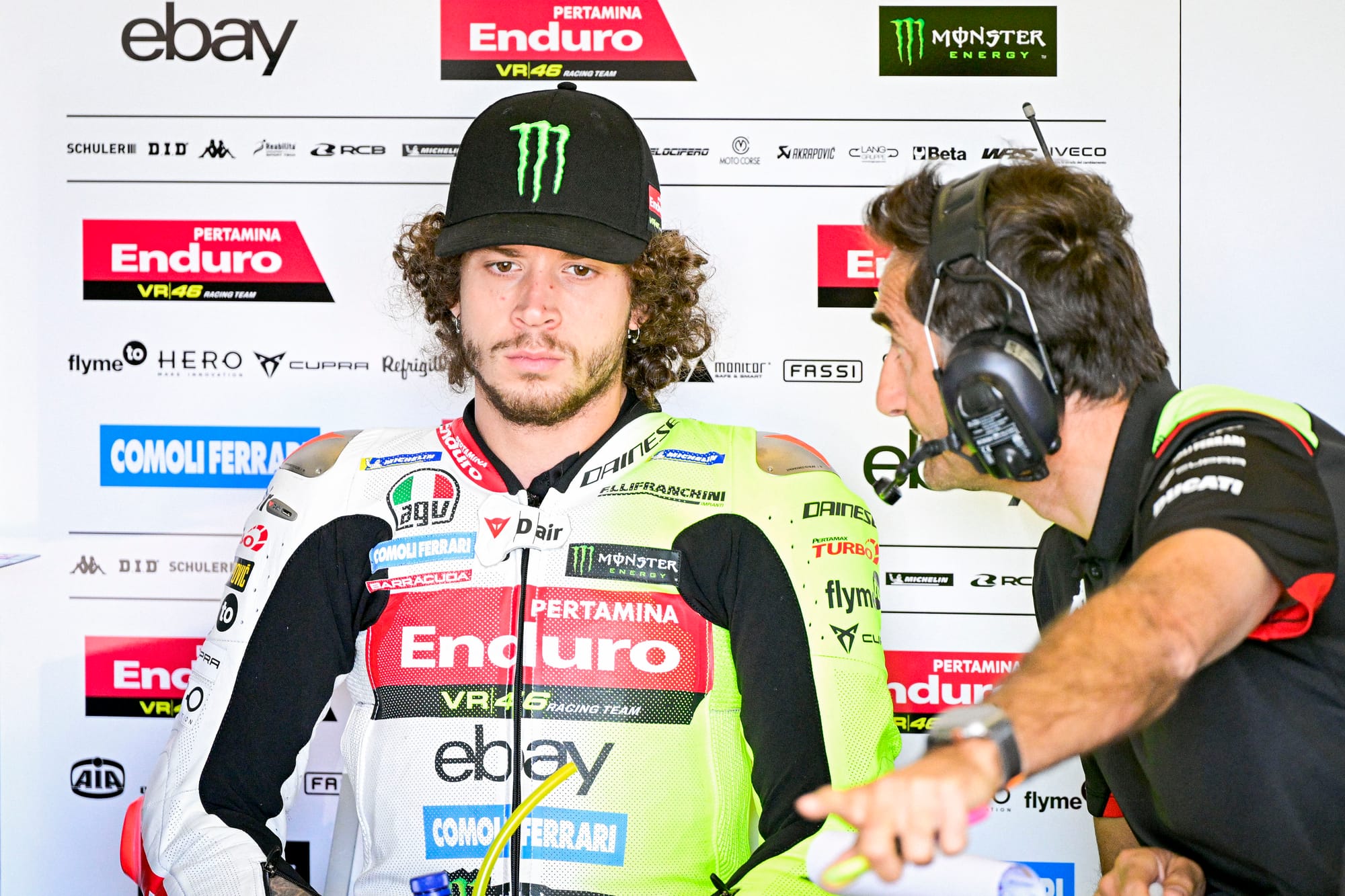
"The bike doesn't turn, when I put the bike in with brakes, I don't feel the bike turning. I struggle to hit the apex, I struggle to release the brakes.
"So I have to slow down mid-corner, and then when I open the throttle, also the bike doesn't turn in the initial touch so I always go wide, and I continue to lose speed in the mid part of the corner.
"I can brake as late as I want but I can't put the bike in, so, yeah, this is the toughest part of the riding.
"Then as soon as I take confidence, every time I crash. When I try to do more, also I crash."
The 2023 Ducati isn't a good fit for Bezzecchi. Despite its very credible showings all throughout last year, it isn't necessarily an all-rounder.
"This bike in a natural way carries a lot of speed into the corners," said Bezzecchi's VR46 team-mate Fabio Di Giannantonio. "That's not a help, honestly, to go fast, because it makes you do different lines, wider lines, and it pushes you a lot in the front.
"But in my case, in my riding style, it's not a big-big problem. Also me, I'm a rider that carries a lot of speed into the corner.
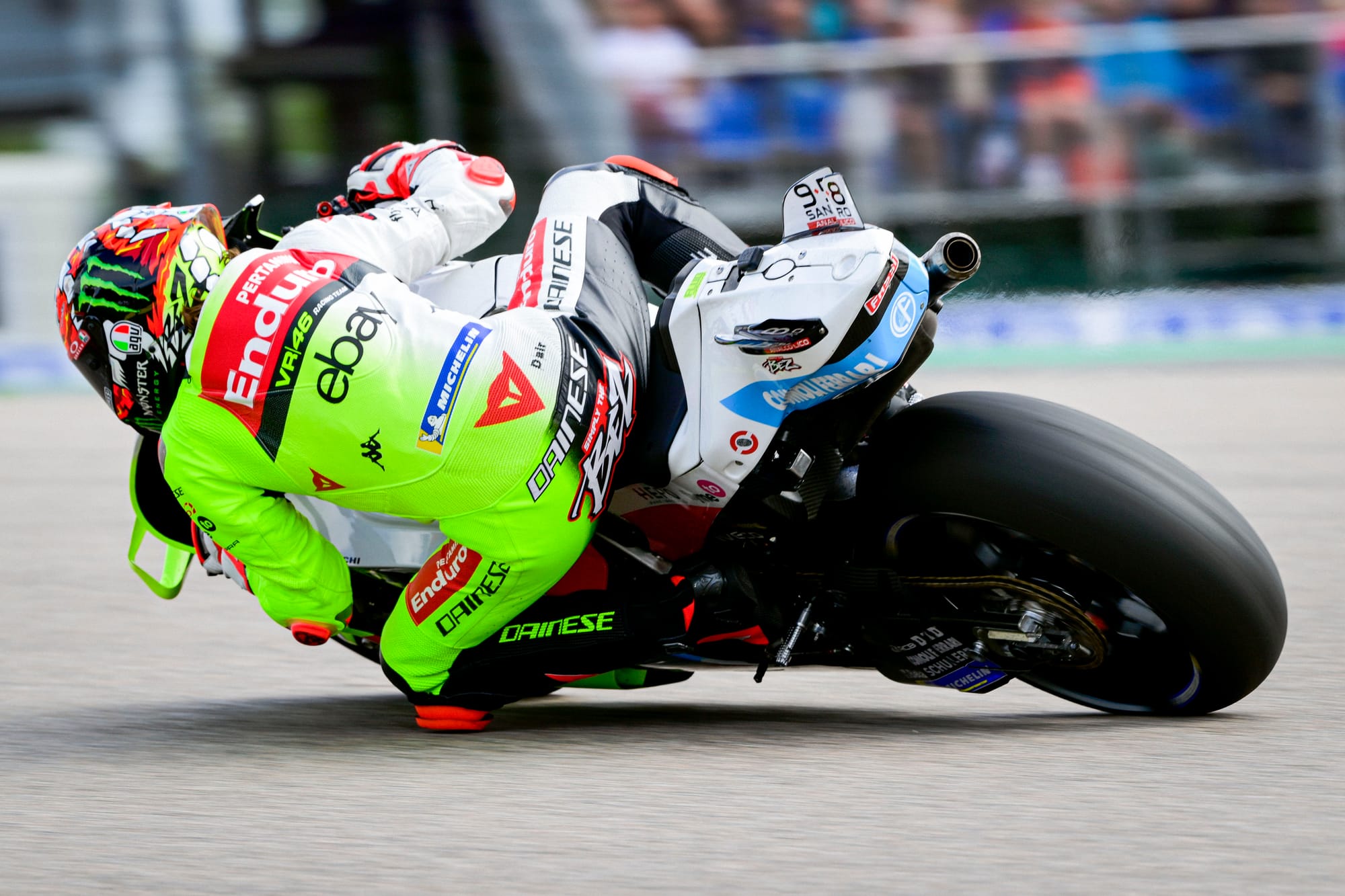
"So, let's say that sometimes I would need a little bit more turning but it's a particularity of the bike, that it doesn't destroy my way of riding. At the end I can fight a bit with it."
For Bezzecchi, clearly it does "destroy" his style a bit. "The biggest difference is that they [fellow GP23 riders] are able to release the brake in trail-braking more than me and carry more entry and corner speed.
"When I try to do it, I go wide or I crash."
But Bezzecchi has also been increasingly vocal about the other culprit in this puzzle, the one that should remain a concern even once he switches to Aprilia.
Michelin's rear tyre changes for 2024 weren't expected to have a transformative effect on the championship - but increasingly the new-construction tyre seems to be behind all the key trends.
The works-spec Ducatis were struggling with rear tyre chatter to begin the season, but now that they have it under control rivals are indicating the 2024 bike is much better at fully exploiting the increased grip that's suddenly there.
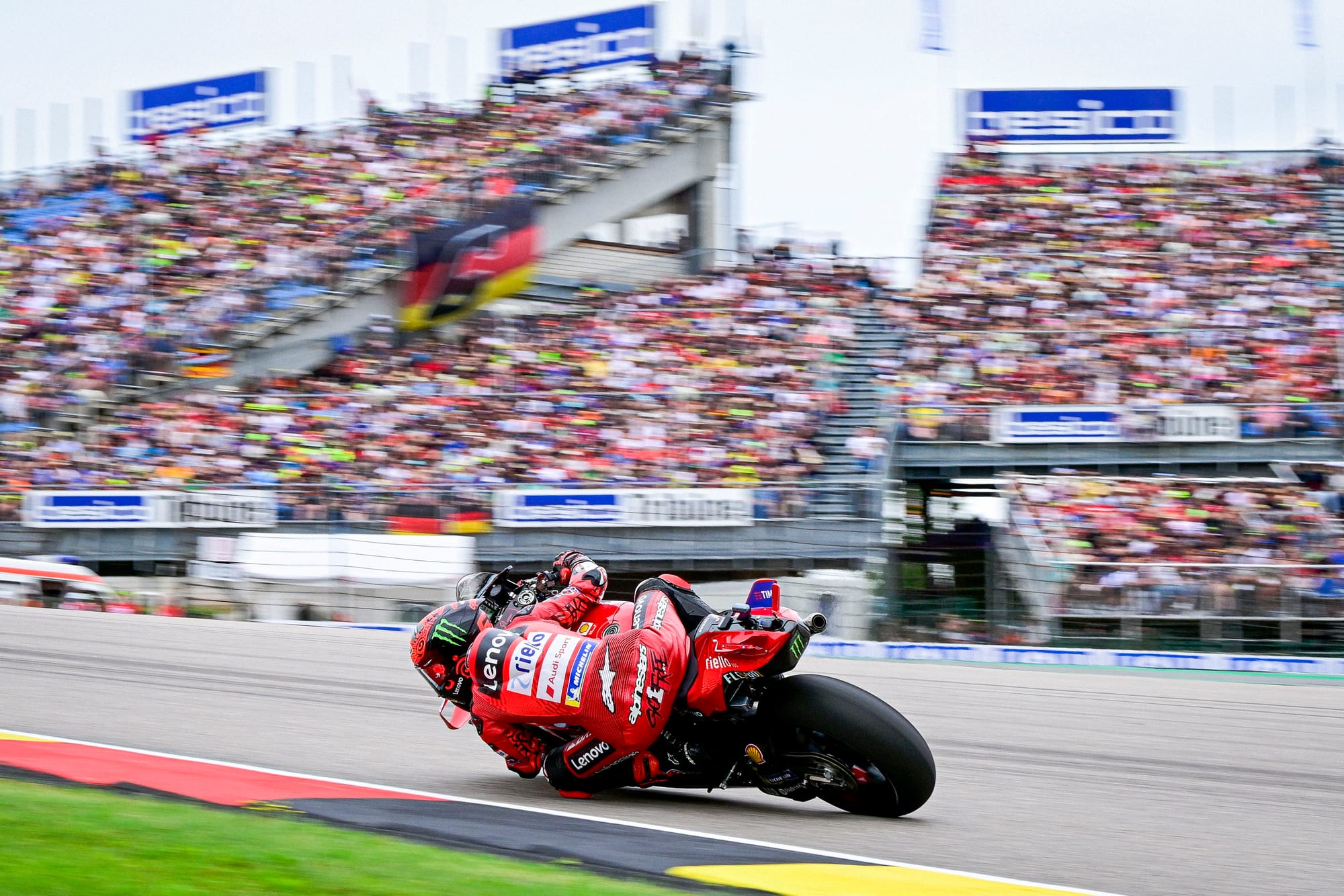
And that increased grip is evident - lap records are being demolished, and all the riders are single- or double-digit seconds faster than their reference times from last year's races. You could spend a lot of time trying to dissect how much of that is bike development, how much of that is day-to-day conditions and how much of that is the tyre - but, certainly, champion Pecco Bagnaia is among those pointing the finger firmly at the latter factor, and the majority of the available evidence is on his side.
"The new rear tyre is ... very good, but for me it never helps," admitted Bezzecchi. "I don't want so much grip.
"I struggle too much, I destroy the front every session [because the rear is pushing it].
"The performance is very high but for my side, it's difficult to use this extra grip.
"The new bike [also] has more grip, I notice this immediately in the Valencia test [last year]. But in the Valencia test with the old tyre construction I was third at the end of the day. And then as soon as I tried the new-construction tyres in Malaysia, I started to have these problems. And I started to struggle, and we are struggling to find the solution."
It is because of this that Bezzecchi described this year's Spanish Grand Prix, probably the only truly good weekend of his season, as "honestly one of my best performances so far".
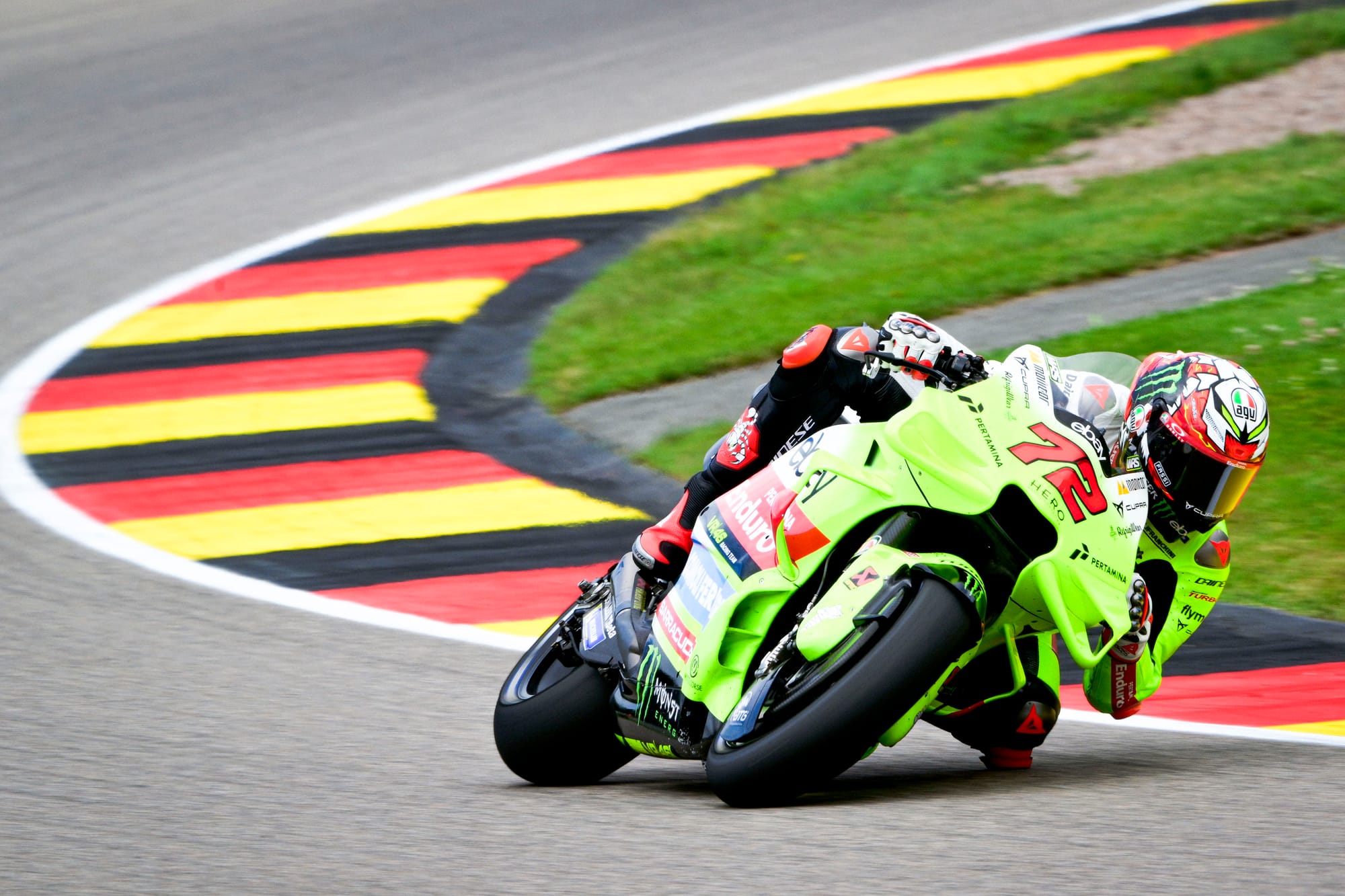
But it's been an outlier. And, as The Race pointed out to him in an unfortunate but unavoidable bit of knife-twisting, it's not like the rear tyre will be reverting any time soon.
"I don't know if they are trying to use this tyre as a test for another new construction tyre, but anyway we have to face this problem through all the season.
"So now I go in the box, I check the data, I try to study everything, like I do every day."
Bezzecchi's weekend got better in the end. He was a much cheerier character after the sprint, aided by a change to his GP23 to dial out some "stability" in favour of "agility".
"The bike was very good in the stability area, but was very stiff to put the bike in the corners. And for the problem that I had on the trail-braking this wasn't helpful.
"Having a better [corner] entry, this gave me the confidence to go in a bit faster in the corners."
When asked by The Race whether this was a change that lowered the performance ceiling via the loss of the aforementioned stability, he said: "Let's say that on the bike it's always a compromise. You can't have everything, apart from some very very difficult [rare] case that you have once a year or two if you are lucky.
"Let's say that for here I prefer less stability."
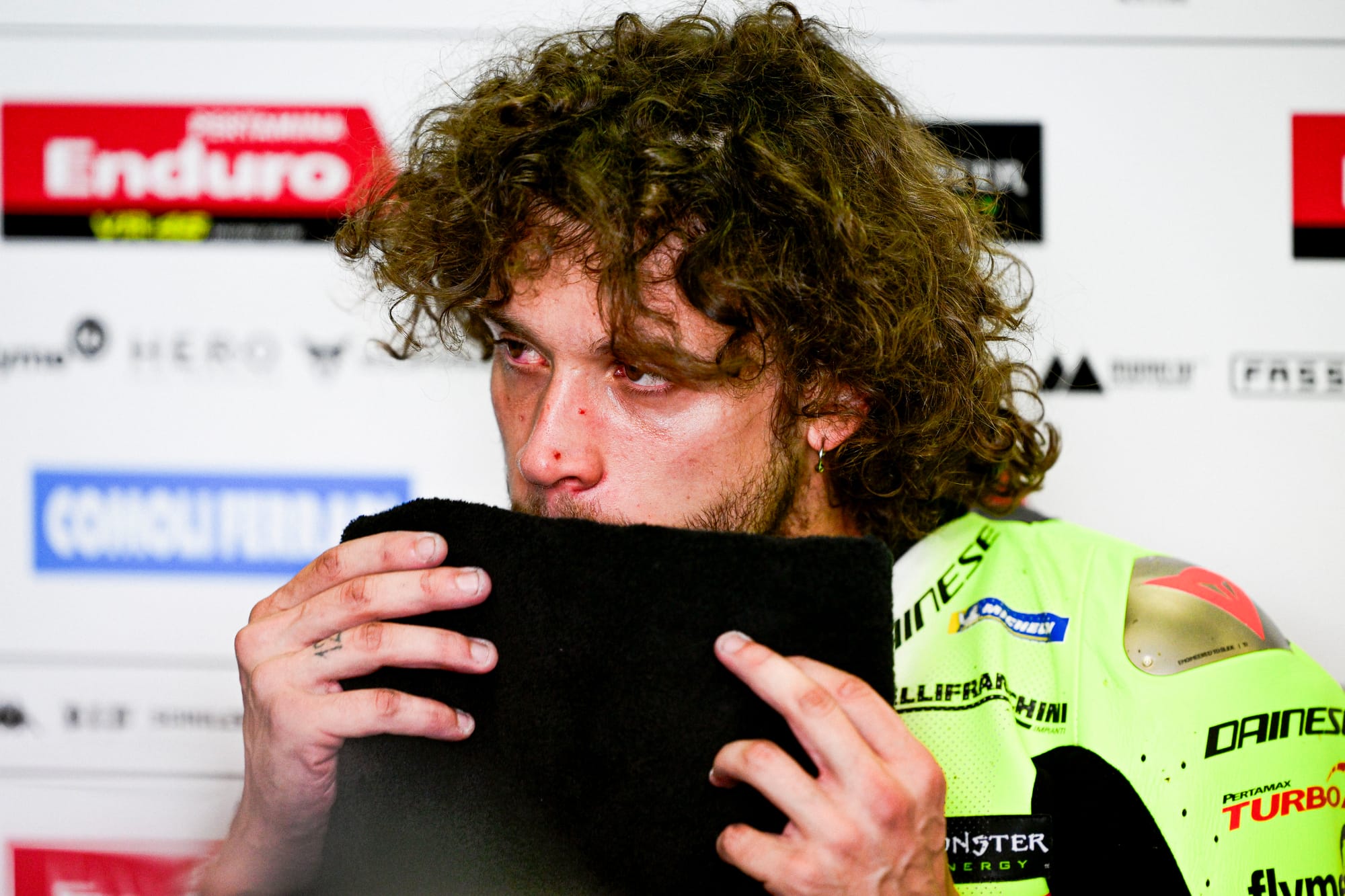
Otherwise, though, Bezzecchi made it clear that he did not want to spend the rest of the season desperately lurching from one set-up to another and instead wanted to focus on "riding over" the problems he had.
"Already in Jerez I thought it was going to be a bit easier, but then we met again some problems. Hopefully now we can... at the end, we changed our way to work, we stopped moving the bike [set-up] too much and we tried to focus more on the details, more on the riding, riding over the problems was the main target this weekend.
"And I think we will continue to do this at the end of the season. We saw that moving a lot the bike was not the solution, we never found the way to improve the bad feelings that I had. So... hopefully can be a new start."
In that sense, both Sachsenring races were tentatively positive - he was far, but more limited by grid position and lack of early-lap gains than pace, with much of the disadvantage to his Ducati peers probably accounted for by battles with the late-braking, hard-to-pass but ultimately slower KTMs.
Bezzecchi appreciates the summer break but is "very hungry" to return on the bike in Silverstone, to see whether he's made a real breakthrough.
Even if he has, there is no sign that he's truly out of the woods. No sign that he's at the level that he would expect himself to be after finishing third last year.
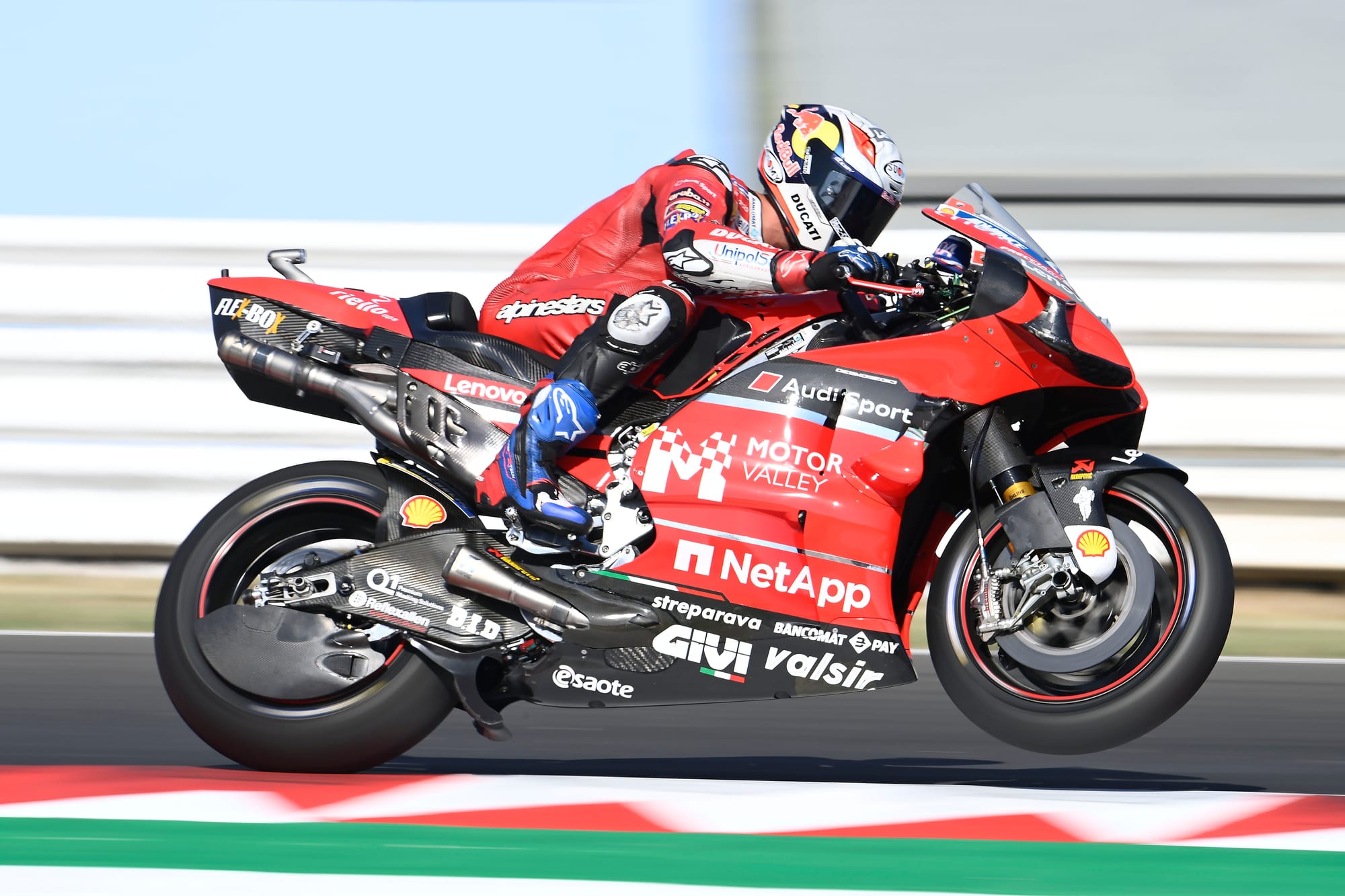
In 2020, when Andrea Dovizioso should've been the rider picking up the pieces after Marc Marquez's season-changing injury, there was also a new Michelin rear - and Dovizioso could not make it work. There is a robust case to be made that it ended his MotoGP career.
Bezzecchi is younger, has more time to figure things out and has a contract that will take him to the cusp of a new regulations change. A long-awaited new Michelin front could change his fortunes, too.
But while the final championship result of his 2024 season won't matter so much, he is in no position to sit and wait - and he seems well aware, too.
There are some fundamental questions that will need to be tackled, over and over again, across these remaining 11 rounds, lest Bezzecchi's travails on the Ducati GP23 follow him onto next year's Aprilia RS-GP.


